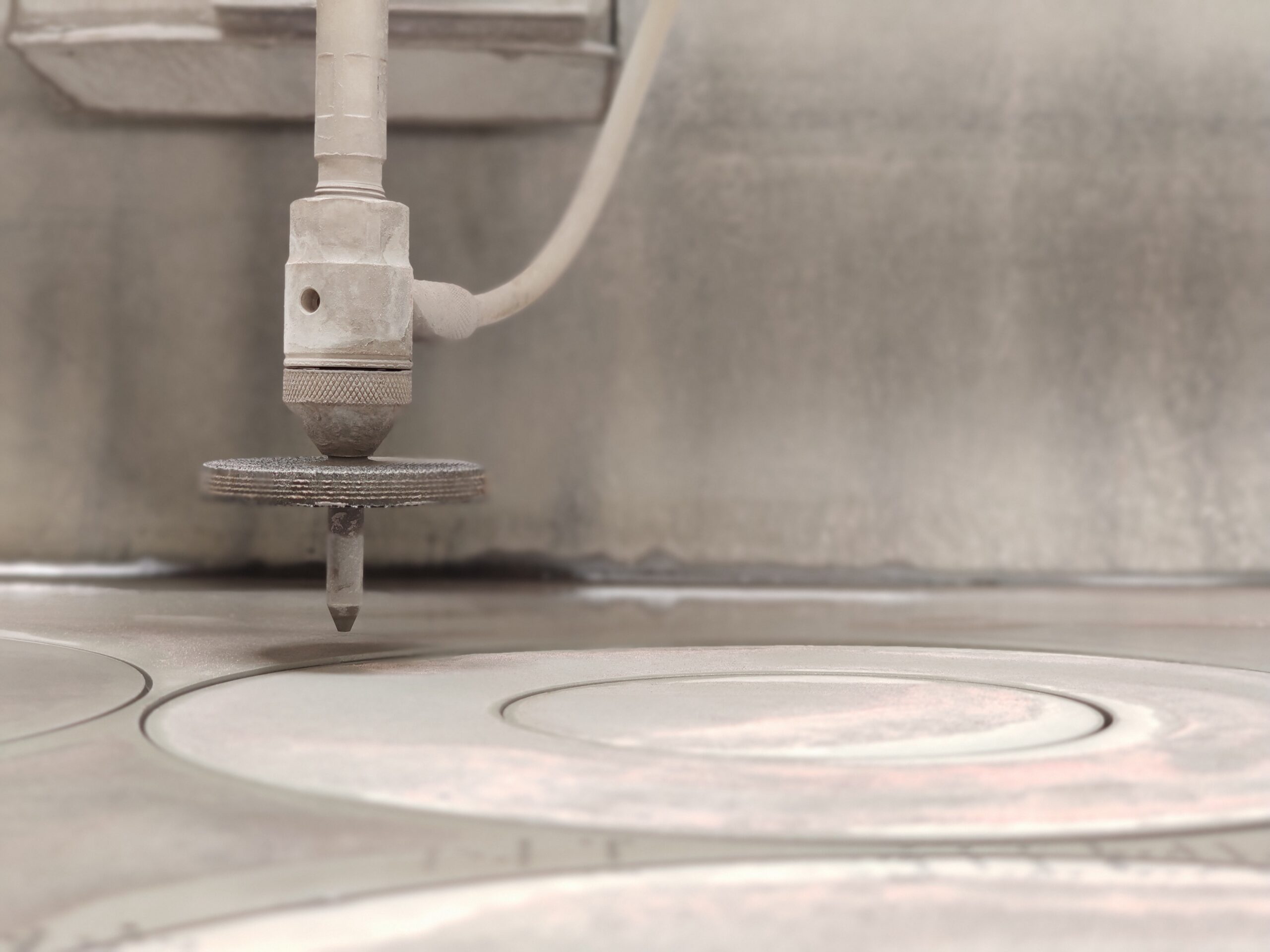Technical details of waterjet cutting
In recent years the demands placed on industrial waterjet cutting have increased drastically. These go beyond better productivity or cutting speed – we must be able to cut complex shapes with high precision while maintaining a good quality edge of the cut.
Waterjet cutting provides a comprehensive solution to these problems and requirements, while also increasing the efficiency of post-cutting processing.
Meticulous development
When cutting with a water jet, a small diameter, extremely high-pressure stream of liquid moves towards the target object at extreme speed. It carries in its flow millions of tiny particles – so-called abrasive material. It exits the system from the material to be cut at a distance of 2mm at nearly three times the speed of sound. As a result it essentially erodes away any material in its path within fractions of seconds. The diameter of the exiting water jet is less than 1 mm, making this method perfect for even the finest cuts.
Precision cutting
The abrasive material consists of specially produced high-strength rock fragments that are mixed into the water stream by a feeding system designed for this purpose. Upon impact, they transmit energy to the material as if thousands of tiny cannons were bombarding it. Since in waterjet cutting, the beam is well-focused (there is even a nozzle with a diameter as small as 0.1 mm), it exerts its cutting effect along only one precise line. Due to their distribution density and small size, an extremely uniform and precise removal occurs along this line creating what is known as “the cut edge.”
Cutting thick materials
One major advantage of using water for cutting over heat-based methods is that it can be applied on almost all types of materials regardless their structural composition. The system can even cut through metal or stone plates up to 150 mm thick! A system operating with such power input does not yet exist because developing one would be uneconomical due to operational costs involved in running it efficiently.
Materials cut by waterjets are not subjected to thermal stress; hence there’s no surface hardening, warping, slag drips or melted residue.
For more photos visit our gallery where we continuously update images showcasing our most interesting works.

